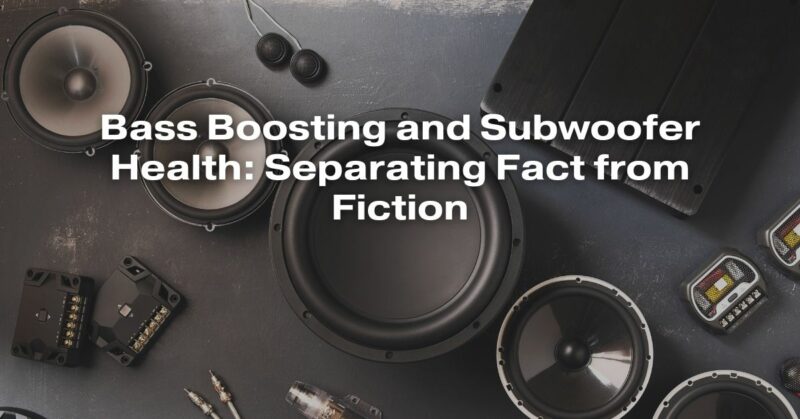Bass boosting is a popular way to enhance the low frequencies of music, but there is some debate about whether it can damage subwoofers. In this article, we will separate fact from fiction and provide some tips on how to use bass boosting safely.
How does bass boosting work?
Bass boosting works by amplifying the low frequencies of music. This can be done using a variety of methods, such as adjusting the bass knob on your amplifier or using a dedicated bass boost equalizer.
Can bass boosting damage subwoofers?
It is possible to damage subwoofers with bass boosting, but it is important to note that this is not always the case. The risk of damage depends on a number of factors, including the type and quality of your subwoofer, the amount of bass boost you are using, and the volume at which you are listening.
One of the main risks associated with bass boosting is that it can cause the subwoofer cone to overexcursion. This means that the cone moves further than it is designed to, which can put stress on the voice coil and other components. Overexcursion can eventually lead to failure of the subwoofer.
Another risk associated with bass boosting is that it can cause the subwoofer to overheat. This is because the voice coil generates heat when it is moving. If the subwoofer is already working hard to reproduce the low frequencies of your music, adding bass boost can cause it to overheat. Overheating can also lead to failure of the subwoofer.
How to use bass boosting safely
There are a few things you can do to reduce the risk of damaging your subwoofer when using bass boosting:
- Use a high-quality subwoofer. Subwoofers that are designed to handle high levels of power and bass are less likely to be damaged.
- Don’t overuse bass boost. A little bit of bass boost can go a long way. Overusing bass boost can put unnecessary stress on your subwoofer and increase the risk of damage.
- Listen at a moderate volume. Listening to music at high volumes can damage your subwoofer, even without bass boost.
If you are concerned about damaging your subwoofer, you can use a clipping indicator. A clipping indicator will tell you when the amplifier is clipping, which is a sign that it is being overloaded. If you see the clipping indicator light up, reduce the volume or bass boost.
Other factors that can affect subwoofer health
In addition to bass boosting, there are a number of other factors that can affect the health of your subwoofer. These include:
- Proper installation. Subwoofers should be installed correctly in order to function properly and avoid damage.
- Environmental factors. Extreme heat or cold can damage subwoofers. It is also important to avoid placing subwoofers in damp or dusty environments.
- Regular maintenance. Subwoofers should be inspected and cleaned regularly to remove dust and debris.
Conclusion
Bass boosting can be a great way to enhance the low frequencies of your music, but it is important to use it safely to avoid damaging your subwoofer. By following the tips above, you can reduce the risk of damage and extend the life of your subwoofer.


